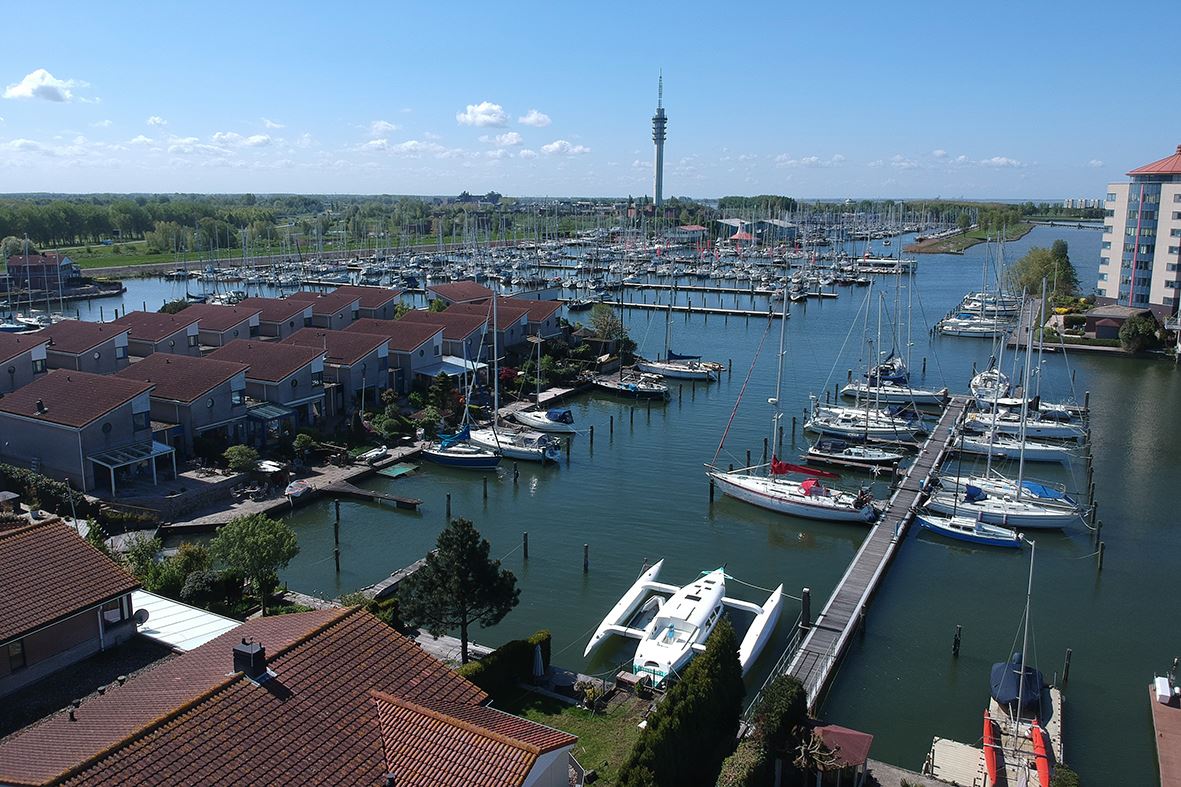Well, I now have a green boat, but not because of the curing epoxy, but it is still pristine resin distribution mesh behind a floppy vacuum bag.
Long story short, for the first time in my project the vacuum infusion failed, or better said, I could not run the infusion because of two persistent leaks from the inside in the aft beam area. But don’t worry, it appears to be not a big deal, it only causes slight delay.
It has been a looong day that started very hopefully:
Thursday January 5
04.00 AM
There is a violent storm going on and some areas in The Netherlands are fighting against a extremely high water level, the quay on our garden is flooded and my car alarm woke me up. The storm activated the motion sensor of the alarm system in the car. O well, it will be a busy day today, so better get up early.
04.15 AM
I receive an email of Arjen Korevaar of www.Polyworx.com containing the infusion strategy and simulation. He worked all night to design a perfect but simple infusion strategy. This comes just in time for me to translate this into the dimensions of the runners. It shows a further development of the strategies I have used so far. Yesterday evening I prepared a fore and aft pleat in the resin distribution mesh for the vacuum line on top of the hull, but that was too premature. In this new strategy there are only some single venting ports, just ingenious.
05.00 AM
It is still no winter and the heater is able to heat the workshop to a level of about 20ºC. Yesterday I’ve put the resin in the canteen with the heater high at a temperature of about 23ºC. But before going to work on Fram I have to finish some business things at the office.
The planning for today is fixing the resin distribution mesh, the resin feeder lines, the venting ports, the vacuum bag and putting the whole hull under vacuum. I prefer to let the vacuum alone during the night from Thursday to Friday. The vacuum infusion is planned tomorrow Friday 10.00 AM. and I will be assisted by some helpers including Arjen.
But it went different.
2.00 PM
Still busy with the green resin distribution mesh. I still have to buy some PVC parts for the resin traps, 1″ tube and two valves for the resin feeding line. A colleague of mine was kind enough to do that for me.
5.00 PM
It looks to become late this evening, so I phone my wife that she don’t have to count on me for supper.
9.45 PM
At 10 PM , the building alarm must be enabled and I phone the security company that enabling the alarm is not possible because I’m still at work. I also phone my wife again saying it will be very late tonight and she don’t have to wait for me.
D-Day, Friday January 6
1.00 AM
Yesterday I tested cheap insulation foam to see if it was not eaten up by epoxy resin. That seems to be not a problem and I now cut the venting ports out of this insulation foam.
I feel annoyed because it looks that I don’t have enough time to get the hull under a vacuum for several hours.
2.00 AM
Finally the resin distribution mesh is done and all the spiral tubes are in place. I prepare two pieces 53’x10′ of vacuum film and put them together to form a 53’x20’m sized vacuum bag. That must be enough to cover the 39′ hull.
6.00 AM
In the area of the fore beams the vacuum bag is too short and need a 5’x3′ extension. The second try of this extension does the job. It looks that the vacuum bag in the area of the aft beam is just wide enough, so in that place no extensions are needed.
10.00 AM
Vacuum bag is still not closed, helpers arrive.
11.30 AM
Vacuum pump is on, but there are a lot of leakages and the vacuum bag around the aft beam flanges is too tight and still needs an extension. Arjen is doing the Port side and I’m making the Satrboard side of the bag extension. The vacuum bag begins to look as a mess, but who cares, only the result counts. 1.00 PM
1.00 PM
It appears that the plastic valves are not airtight in the closed position. These valves are a bad buy and have to be replaced by the brass ones I normally use. However, I don’t have them and make a temporary seal with some tacky tape and vacuum film.
2.00 PM
Now we are getting some vacuum. My collegue Robert turns out to be the perfect leakage seeker. With unmatched patience and accurateness the one after the another leakage is being solved by him. It turns out that there are some leakages from inside. I thought that would not be possible because the inside is covered by the internal laminate and this has been resin infused too, so this must be airtight. Unfortunately that is not the case, it appears there are some very small holes. The only explanation I can think of is the following:
The fore and aft battens were 18mm. thick,
The foam is 15mm. thick,
So a total thickness of 33mm.
The temporary screws were 30mm, so in theory there is a 3mm play above the screw point.
Now what if the screw was driven to deep in the wood with the screw point just in or above the foam surface. Apparently this has been airtight during the resin infusion of the internal laminate, but leaves a very small hole after removing the screw. This is the only explanation I can think of.
And there are some holes from the inside in the bow tube area. But that is a result of my own stupid fault as I’ve used some temporary screws there without noticing I punctured the internal laminate with them.
4.00 PM
The vacuum is still not more than about 15″Hg, caused by two leakages in the aft beam area and these seems to come from inside as well. The only way to fix that is to give the sealant tape of the vacuum bag an alternative route.
But by now a jetlag feeling is overwhelming me. The alteration of the vacuum bag and putting vacuum on again will take at least another three hours and together with the infusion and geltime requires another 14 hours of me to stay awake. Saturday and Sunday I have other (family) obligations so it is not wise to go on.
But now that I know the cause of the malfunction it is easier for now to give up.
… to be continued …











 Posted by Fram
Posted by Fram 







